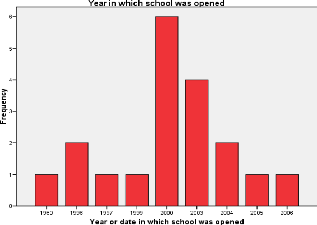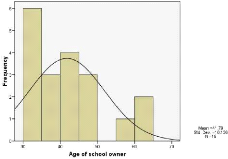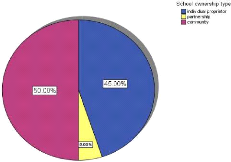4.2 Background
This research was carried out in 20 private schools in the slum
of Kibera, the largest slum in
East Africa. Data were gathered via
questionnaires from 20 school owners, 25 student and 25
teachers from five
schools. Interviews were carried out with George Mikwa, the president of
the Kenya Independent School Association (KISA) as well as
four school owners and directors. The following background information will be
necessary in understanding the results of the findings and being able to put
these in context.
4.2.1 School and school owners
There are roughly 116 private schools currently operating
within the slum area of Kibera (Dixon, 2009). Data were gathered in 20 of these
schools. The schools operate their own Association, which is the Kenyan
Independent Schools Association (KISA), an association that was set up and
registered in 1999 with the Kenyan Government. The association draws its
membership specifically from non formal schools (Private). In tracing back the
origins of this association, its current president George Mikwa (a private
school entrepreneur himself) recounts that:
«The idea of KISA was to have an umbrella body that
is going to help us promote its activities...the actual sense was that, we had
Kenyan children and we were teaching them in our schools and of course the
quality was not all that bad, but most of the children had grown in poor
families. We wanted to bring on board all the private schools so that we could
have strength. We believe that the many we are, we could achieve our lobby
activities so as to achieve our objectives that were set and agreed earlier,
that is improving quality in our schools and responding adequately to the
people's need for
Education» (Interview, Mikwa)
Of the school owners that participated in this research 12
were male and 8 were female (table 1). Schools were set up between the years of
1980 and 2006, therefore the oldest school was almost 30 years old with the
most recent school being established for 3 years (see figure 1). The result
confirms that some of these schools have been operating for decades, it seems
safe
to say that the data gathered for this research backs up that
explored in the literature review and generally these private schools are not
fly-by-night businesses ripping off the poor as some critics of private
education for the assert.
Table 1: School owners
Gender of the school owner
|
Frequency
|
Percent
|
|
male
|
12
|
60.0
|
|
female
|
8
|
40.0
|
|
Total
|
20
|
100.0
|
Figure 1: Year in which school was opened

The information contained in the data equally reveals the age
of these schools owners. Out of the 20 schools 19 told us their ages. The
youngest school entrepreneur was aged 30 years old, while the oldest was aged
64 with a mean age of 42 years (table 2).
Table 2: School owner
|
N
|
Minimum
|
Maximum
|
Mean
|
Std. Deviation
|
|
Age of school owner
|
19
19
|
30
|
64
|
41.79
|
10.136
|
Figure 2: Age of school owner


Private schools in the slum of Kibera are owned by various
categories of people. With a limited number of schools involved in the research
(20 schools), the study observed 3 main categories of ownership type. The first
category worth 50% of the schools operating in this area, are community-owned.
This implies that the functioning standards and the school's targets are
decided and implemented by a ruling body with a strong support from the
community essentially made up of local elites and parents association. The
second category is that of individual proprietors (45%). This type of
`ownership' implies that the individual through their own personal initiatives
and funding set up schools and autonomously operate these with or without any
external support. Finally, the third category (only 5%) is made up of
partnership owned schools (see figure3). This last set of ownership type draws
its resources and establishes the basis of its functioning on a joined
initiative, generally with some NGOs (Non Governmental Organisations) or with
another group of entrepreneurs.
Figure 3: School ownership type

| 

